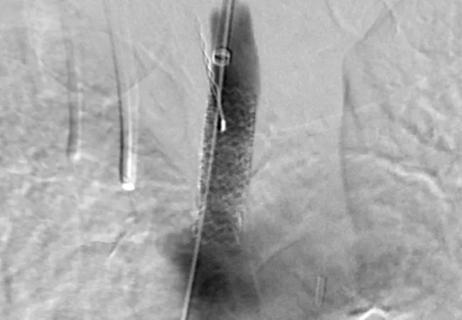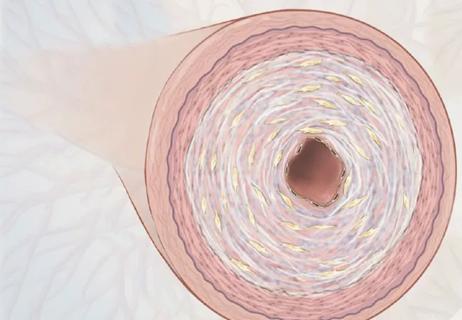Data-based simulations imagine funneling U.S. pediatric operations to bigger centers

If children in the U.S. who need congenital heart surgery (CHS) were sent to the nearest large, regional center instead of the closest low-volume facility, they would have a better chance of a good outcome with just modest added travel distance. So concludes a study published in Seminars in Thoracic and Cardiovascular Surgery (2019 Sep 10 [Epub ahead of print]) that used computer simulations to imagine regionalization of CHS in the United States.
Advertisement
Cleveland Clinic is a non-profit academic medical center. Advertising on our site helps support our mission. We do not endorse non-Cleveland Clinic products or services. Policy
“Concentrating complex services saves lives,” says Tara Karamlou, MD, MSc, a Cleveland Clinic pediatric and congenital heart surgeon who served as senior author of the study, which was conducted by a research team from institutions across the nation. “Regionalizing care makes sense in pediatric congenital heart surgery, just as it does in organ transplantation, another service that entails low national volume and intensive resources.”
Although regionalizing specialized surgeries is generally regarded as an important way to improve outcomes, quantifying potential gains — and drawbacks — can be difficult.
Previous research done by this investigative group found that larger CHS volumes are associated with better patient survival. In addition, simulation studies of CHS regionalization in California conducted by other researchers found that it led to low added travel burden, and actual regionalization in Sweden has been shown to slash mortality rates.
The current study is the first, however, to model CHS regionalization and its impacts across the entire U.S. using both volume and complexity thresholds.
The study identified patients 18 years or younger who underwent CHS in 2012 from all available state inpatient databases for that year (plus two states with data from 2011), for data from a total of 39 states representing 90% of the U.S. population. Operations were stratified using the Risk Adjustment for Congenital Heart Surgery, Version 1 (RACHS-1) system, which consists of six mortality risk categories (from 1 [low risk] to 6 [high risk]). Patients with an unknown RACHS-1 category were assigned category 0. Regionalization was modeled by progressive termination of CHS services by hospitals, starting with the lowest-volume hospital in a region.
Advertisement
After sorting hospitals by total number of CHS operations performed, two simulations were conducted, as follows:
Mortality rate analyses were conducted in two ways: either hospitals maintained their original mortality rate throughout the simulation, or stratified mortality rates were used to simulate reduced mortality expected from increased volumes.
The study identified 19,880 CHS discharges from 330 hospitals. After exclusion of hospitals that performed only patent ductus arteriosus ligations, the cohort was reduced to 19,064 operations at 153 hospitals in 36 states — a greater than 50% decrease in the number of hospitals. This cohort was used for the mortality analyses. The high-risk cohort consisted of 2,183 operations among 111 hospitals.
Patients with unknown ZIP codes were excluded, resulting in a cohort of 15,887 patient discharges used for distance calculations.
General simulation. The baseline overall mortality rate before simulation was 3.5% (666 deaths). As more patients were moved to higher-volume hospitals in each round of simulation, the mortality rate progressively decreased.
Advertisement
By the time the lowest-volume remaining hospitals performed at least 311 CHS operations per year, the mortality rate (based on each hospital’s original mortality rate) would have fallen to 3.1% (583 deaths), or a 12.5% relative reduction from baseline (P < 0.01). In the stratified mortality rate analysis, mortality dropped to 2.9% (550 deaths), or a 17.4% relative reduction from baseline (P < 0.01).
To achieve the above results, 7,019 patients would have been moved and 37 hospitals would still be performing CHS. Median distance traveled by patients would have risen from 38.5 miles at baseline to 69.6 miles (P < 0.01).
Simulation involving only high-risk operations.When patients were redistributed so that all 2,183 high-risk patients had surgery at hospitals that performed at least 311 total CHS operations per year, the number of hospitals performing high-risk operations fell from 111 to 21. Under this scenario, the mortality rate for high-risk patients decreased from 7.5% at baseline to 6.3% (P = 0.04), resulting in 26 potential lives saved. However, after factoring in the lower-risk patients staying at their original hospitals, the mortality rate in the overall cohort did not change significantly. Results of the stratified mortality rate analysis were consistent with these findings.
Dr. Karamlou notes that several important findings emerged from the regionalization simulations:
Advertisement
“Regionalization for congenital heart surgery makes sense, but it faces real obstacles,” Dr. Karamlou says. “The current remuneration system does not favor this approach, and few hospitals are willing to cut back on services that are highly lucrative. This analysis may spark much-needed discussion about how we might collectively serve our patients more effectively and efficiently.”
“The outcome of congenital heart surgery for a child may be a normal and very fruitful life, or it may be repeated surgeries and a life with less than optimal functionality — it’s directly related to the experience of the treating team,” adds her colleague Hani Najm, MD, Cleveland Clinic’s Chair of Pediatric and Congenital Heart Surgery. “For this reason, the increased experience that comes with regionalization can have a tremendous impact on children’s lives. The call for regionalization is all about improved outcomes.”
Advertisement
Advertisement

How our first century has impacted cardiovascular practice

Review offers comprehensive assessment of the landscape for wearables and more

Preserving trust in research requires vigilance and consensus around statistical nuances

Cardiac surgeon Patrick Vargo, MD, reflects on his first year as Cleveland Clinic staff

Centralization would likely bring better outcomes, experts say, but may not be feasible

JACC review makes the case and outlines how to ensure oversight

Editorial lays out best practices from three Cleveland Clinic surgeons

Cardiac manifestations of this autoimmune disorder can be hidden but deadly